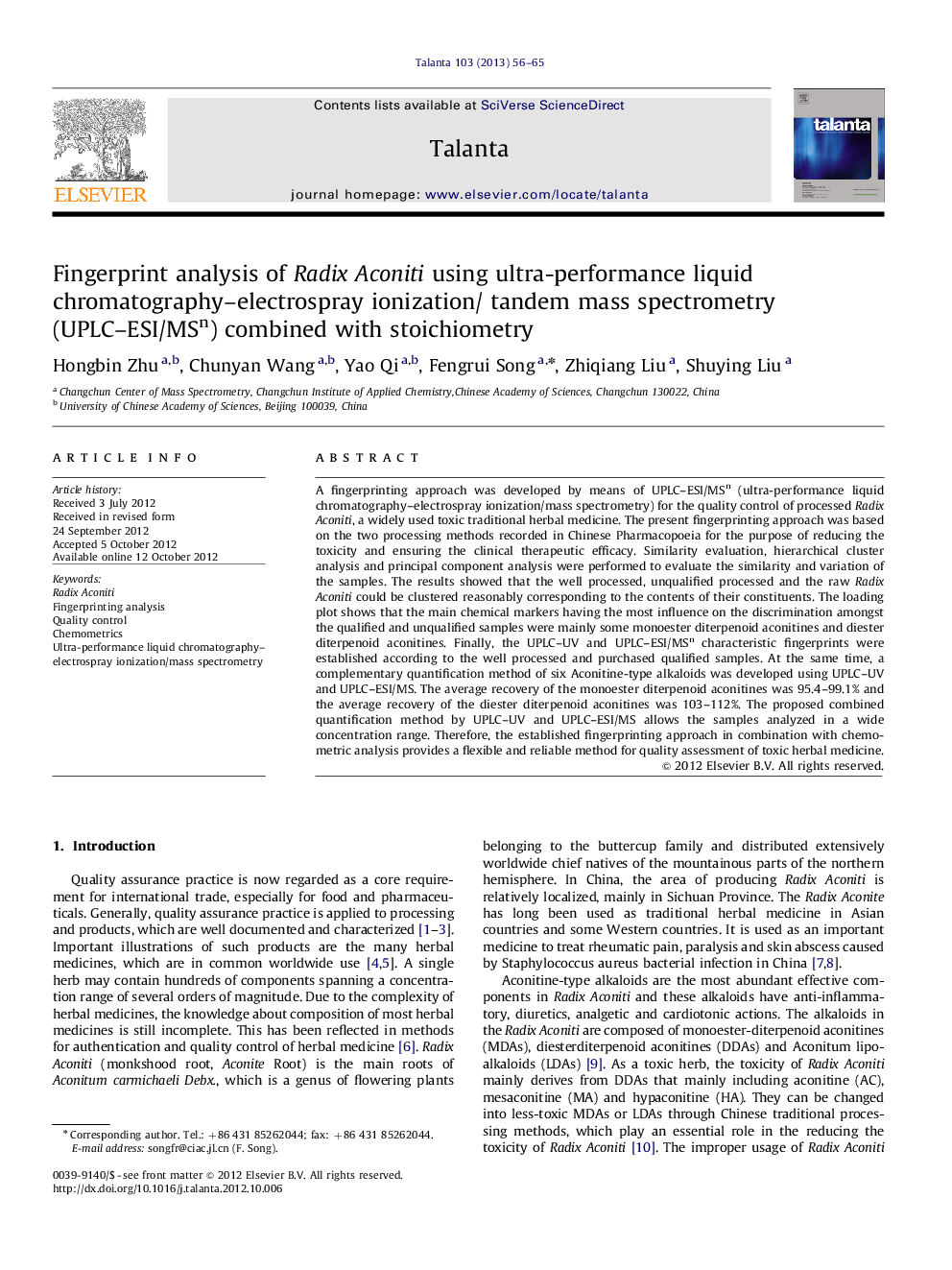| Article ID | Journal | Published Year | Pages | File Type |
|---|---|---|---|---|
| 1242900 | Talanta | 2013 | 10 Pages |
A fingerprinting approach was developed by means of UPLC–ESI/MSn (ultra-performance liquid chromatography–electrospray ionization/mass spectrometry) for the quality control of processed Radix Aconiti, a widely used toxic traditional herbal medicine. The present fingerprinting approach was based on the two processing methods recorded in Chinese Pharmacopoeia for the purpose of reducing the toxicity and ensuring the clinical therapeutic efficacy. Similarity evaluation, hierarchical cluster analysis and principal component analysis were performed to evaluate the similarity and variation of the samples. The results showed that the well processed, unqualified processed and the raw Radix Aconiti could be clustered reasonably corresponding to the contents of their constituents. The loading plot shows that the main chemical markers having the most influence on the discrimination amongst the qualified and unqualified samples were mainly some monoester diterpenoid aconitines and diester diterpenoid aconitines. Finally, the UPLC–UV and UPLC–ESI/MSn characteristic fingerprints were established according to the well processed and purchased qualified samples. At the same time, a complementary quantification method of six Aconitine-type alkaloids was developed using UPLC–UV and UPLC–ESI/MS. The average recovery of the monoester diterpenoid aconitines was 95.4–99.1% and the average recovery of the diester diterpenoid aconitines was 103–112%. The proposed combined quantification method by UPLC–UV and UPLC–ESI/MS allows the samples analyzed in a wide concentration range. Therefore, the established fingerprinting approach in combination with chemometric analysis provides a flexible and reliable method for quality assessment of toxic herbal medicine.
► Fingerprinting analysis of Radix Aconiti using UPLC–UV and UPLC–ESI/MS. ► PCA and HCA were used for the evaluation of the fingerprinting approach. ► Chemical markers were determined between the qualified and unqualified samples. ► The fingerprinting approach was based on the processing degrees of Radix Aconiti. ► Quantification method by UPLC–UV–MS allows samples in a wide concentration range.
